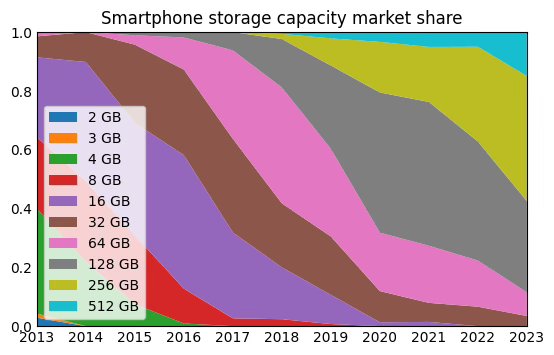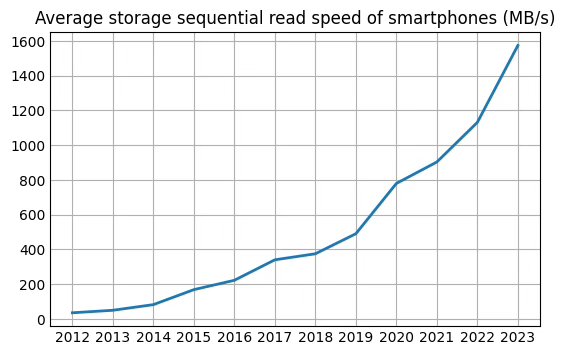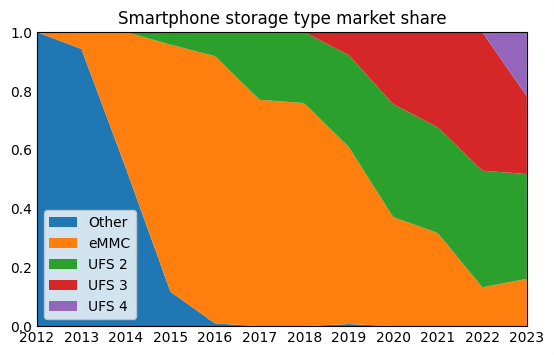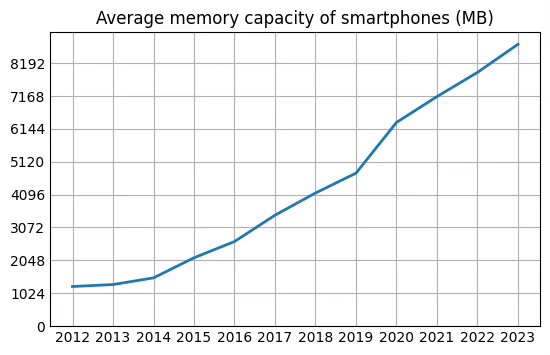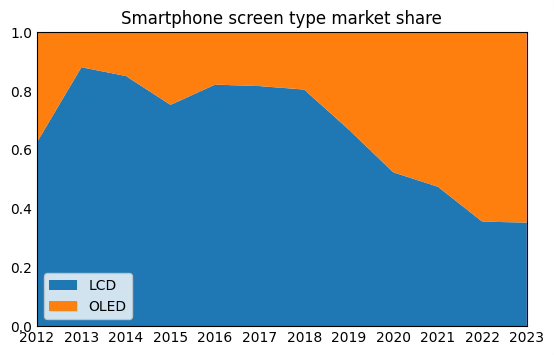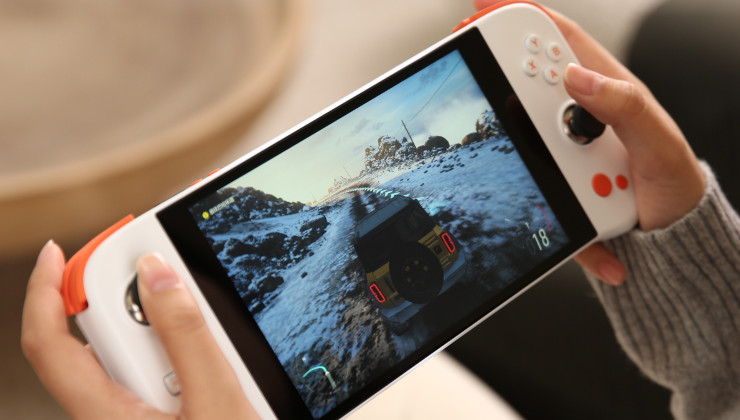Last year, I performed
an analysis of smartphone data from Notebookcheck to show how Switch compared to the smartphone market at the time of its release, and how things have changed (particularly in RAM and storage) since then. As we're now in 2024, I can update the analysis with the full set of 2023 data.
As a quick catch-up,
Notebookcheck has a fairly comprehensive database of smartphone reviews going back over a decade, including the ability to search for benchmark results. I'm using the output of this for my analysis. The data isn't necessarily 100% accurate, and I've noticed one or two cases of mis-labelled data (eg UFS 2 where it should be UFS 3), but for the most part it seems to be pretty good. The total dataset includes 1285 reviews, around 100 a year, covering a pretty wide range of phones, from entry-level to flagship. The data I'm looking at includes only android phones, but as I'm mostly concerned about the off-the-shelf parts that Nintendo might use (eg UFS), android phones are more relevant compared to iPhones which use custom storage solutions.
To start, let's look at storage, here's the average storage capacity graphed over time:
In 2016 (the year before the Switch launched) the average phone storage capacity was 26.9GB, and in 2023 (the year before the Switch 2 launch) it was 231.4GB.
As well as the average, we can also look at how the specific capacities used have changed over time:
In 2016, around 90% of phones had 16GB or more storage, and in 2023, around 90% of phones had 128GB or more storage. We can also see the median storage has increased from 16GB to 256GB over that time.
Looking at storage speed, we see a similar increase:
Average sequential read speeds in 2016 were 223MB/s, which has increased to 1,574MB/s in 2023. People with hacked Switches have got around 300MB/s sequential read speeds from the internal storage, although games aren't able to achieve those speeds, due to CPU bottlenecks (which should be largely eliminated with dedicated decompression hardware on Switch 2).
Finally on the storage side we can look at storage types:
In 2016, eMMC accounted for over 90% of the market. In 2023 it took 16% of the market, with the remainder being 36% UFS 2, 26% UFS 3 and 22% UFS 4.
Next, we'll move onto RAM, where we can look at average RAM capacity over time:
The average RAM capacity in 2016 was 2.6GB, which has increased to 8.8GB in 2023.
As a final bonus graph, here's the split in screen technology over the years:
In 2016, the 82% of the smartphones reviewed used LCD screens, vs 18% using OLED. In 2023, 65% of the phones used OLED screens, vs 35% with LCD.
If we were to look purely at changes in the smartphone market from 2016 to 2023, we've seen, on average, an 8.6x increase in storage capacity, a 7x increase in storage speed and a 3.4x increase in RAM capacity. If Nintendo's hardware choices for Switch 2 were to scale alongside this, we would expect 275GB of storage, 2.1GB/s storage read speeds and 13.6GB of RAM. Or, if we choose the closest parts which are actually available, it would be 256GB of UFS 3.1 storage and 12GB of RAM.
Of course, Nintendo don't have to increase precisely in line with the smartphone market, and they may have different priorities for Switch 2 than the original Switch. Still, I think it's a useful exercise to ground our expectations with real data on how the market for mobile storage and RAM has changed since the launch of the original Switch.



